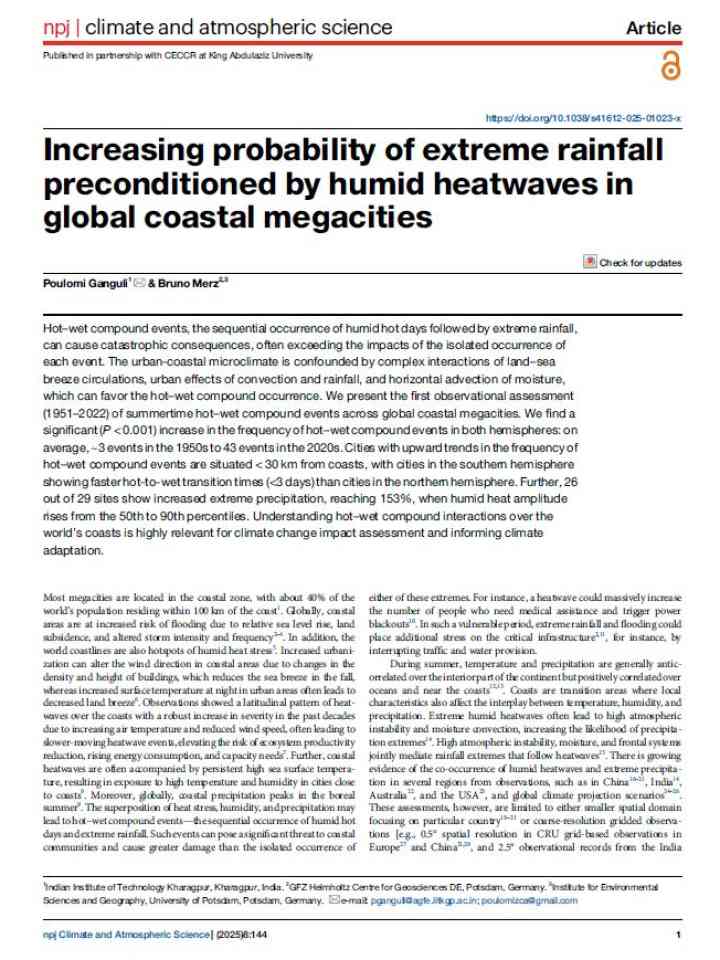Increasing probability of extreme rainfall preconditioned by humid heatwaves in global coastal megacities
This study presents the first observational assessment (1951–2022) of summertime hot–wet compound events across global coastal megacities. The researchers find a significant (P < 0.001) increase in the frequency of hot–wet compound events in both hemispheres: on average, ~3 events in the 1950s to 43 events in the 2020s.
Cities with upward trends in the frequency of hot–wet compound events are situated < 30 km from coasts, with cities in the southern hemisphere showing faster hot-to-wet transition times (<3 days) than cities in the northern hemisphere. Further, 26 out of 29 sites show increased extreme precipitation, reaching 153%, when humid heat amplitude rises from the 50th to 90th percentiles. Understanding hot–wet compound interactions over the world’s coasts is highly relevant for climate change impact assessment and informing climate adaptation.
Explore further
